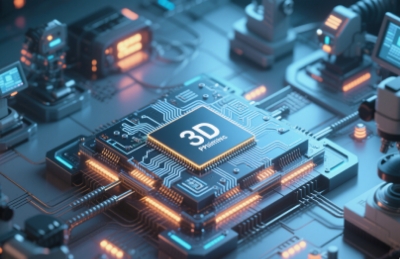In the ever - evolving landscape of advanced technology, two innovations are emerging as game - changers, steering the course of what's possible in the realm of compact electronics. These breakthroughs, neuromorphic chips and 3D printed electronic circuits, are not just incremental improvements but revolutionary advancements that promise to reshape multiple industries.
Neuromorphic Chips: Emulating the Brain's Efficiency
Neuromorphic chips are designed to mimic the structure and function of the human brain. Traditional computer processors operate on a sequential, binary - based system, where data is processed step - by - step. In contrast, neuromorphic chips are modeled after the brain's neural networks, with neurons and synapses that can process information in parallel. This design allows them to handle complex tasks, such as pattern recognition and machine learning, with significantly less power consumption.
A prime example of the potential of neuromorphic chips lies in the field of artificial intelligence (AI). Training large - scale AI models often requires massive amounts of computational power and energy. Neuromorphic chips, however, can execute these tasks more efficiently. A study by a renowned research institute showed that a neuromorphic chip - based system could perform certain AI - related tasks with up to 90% less energy compared to conventional processors. This not only reduces the operational costs for data centers but also opens up new possibilities for edge computing, where AI can be deployed on smaller, battery - powered devices like smartphones and wearable gadgets.

In addition to AI, neuromorphic chips are making inroads in robotics. Robots equipped with these chips can better perceive and understand their environment. For instance, a robotic arm with a neuromorphic chip can quickly recognize and adapt to different objects, enabling more precise and dexterous manipulation. This enhanced ability to process sensory information in real - time could revolutionize industries such as manufacturing, where robots need to handle a wide variety of tasks with high accuracy.
Despite their great potential, neuromorphic chips still face challenges. One of the main obstacles is the development of software and algorithms that can fully utilize the unique architecture of these chips. Since they operate differently from traditional processors, new programming models and tools are required. Additionally, the integration of neuromorphic chips into existing systems can be complex, as it often involves significant modifications to the hardware and software infrastructure.
3D Printed Electronic Circuits: Crafting Customized Solutions
3D printing has long been associated with creating physical objects, but its application in the electronics industry is a relatively new and exciting development. 3D printed electronic circuits involve depositing conductive materials, such as silver nanoparticles or carbon - based inks, layer by layer to form complex electrical pathways. This technology offers several distinct advantages over traditional circuit manufacturing methods.
One of the key benefits is the ability to create customized circuits. In traditional manufacturing, producing custom - designed circuits can be expensive and time - consuming, especially for small - batch production. With 3D printing, engineers can quickly prototype and manufacture circuits tailored to specific requirements. For example, in the development of medical devices, 3D printed circuits can be designed to fit the unique shape and size of a particular instrument, improving its functionality and performance.
Another advantage is the potential for creating flexible and stretchable circuits. By using flexible materials in the 3D printing process, it's possible to produce circuits that can bend, twist, and stretch without breaking. This is particularly useful in wearable electronics, where the circuits need to conform to the body's movements. A recent project demonstrated a 3D printed flexible circuit integrated into a sports vest that can monitor various physiological parameters, such as heart rate, respiration, and muscle activity, in real - time.
However, 3D printed electronic circuits also have their limitations. The conductivity and reliability of the printed materials are still areas of concern. Compared to traditional copper - based circuits, the electrical performance of 3D printed circuits may not be as consistent. Moreover, the printing process can be slow, and achieving high - precision components remains a challenge.
As research and development in neuromorphic chips and 3D printed electronic circuits continue, these technologies are set to transform the future of compact electronics. They hold the key to more efficient, customized, and versatile electronic devices, which will have far - reaching implications for various sectors, from healthcare and transportation to entertainment and communication. The road ahead may be filled with challenges, but the potential rewards make these advancements well worth the pursuit.

